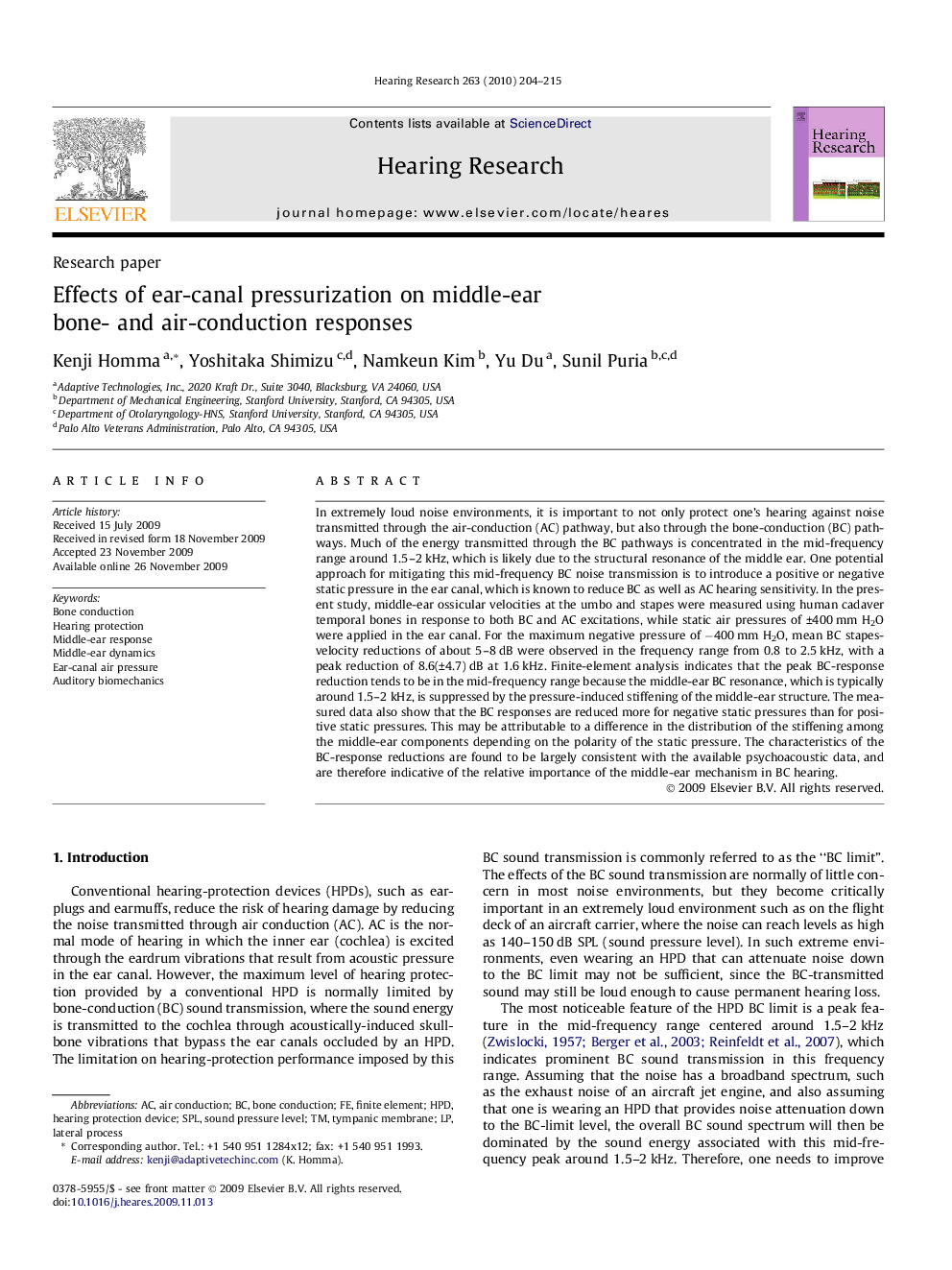| Article ID | Journal | Published Year | Pages | File Type |
|---|---|---|---|---|
| 4355738 | Hearing Research | 2010 | 12 Pages |
In extremely loud noise environments, it is important to not only protect one’s hearing against noise transmitted through the air-conduction (AC) pathway, but also through the bone-conduction (BC) pathways. Much of the energy transmitted through the BC pathways is concentrated in the mid-frequency range around 1.5–2 kHz, which is likely due to the structural resonance of the middle ear. One potential approach for mitigating this mid-frequency BC noise transmission is to introduce a positive or negative static pressure in the ear canal, which is known to reduce BC as well as AC hearing sensitivity. In the present study, middle-ear ossicular velocities at the umbo and stapes were measured using human cadaver temporal bones in response to both BC and AC excitations, while static air pressures of ±400 mm H2O were applied in the ear canal. For the maximum negative pressure of −400 mm H2O, mean BC stapes-velocity reductions of about 5–8 dB were observed in the frequency range from 0.8 to 2.5 kHz, with a peak reduction of 8.6(±4.7) dB at 1.6 kHz. Finite-element analysis indicates that the peak BC-response reduction tends to be in the mid-frequency range because the middle-ear BC resonance, which is typically around 1.5–2 kHz, is suppressed by the pressure-induced stiffening of the middle-ear structure. The measured data also show that the BC responses are reduced more for negative static pressures than for positive static pressures. This may be attributable to a difference in the distribution of the stiffening among the middle-ear components depending on the polarity of the static pressure. The characteristics of the BC-response reductions are found to be largely consistent with the available psychoacoustic data, and are therefore indicative of the relative importance of the middle-ear mechanism in BC hearing.
